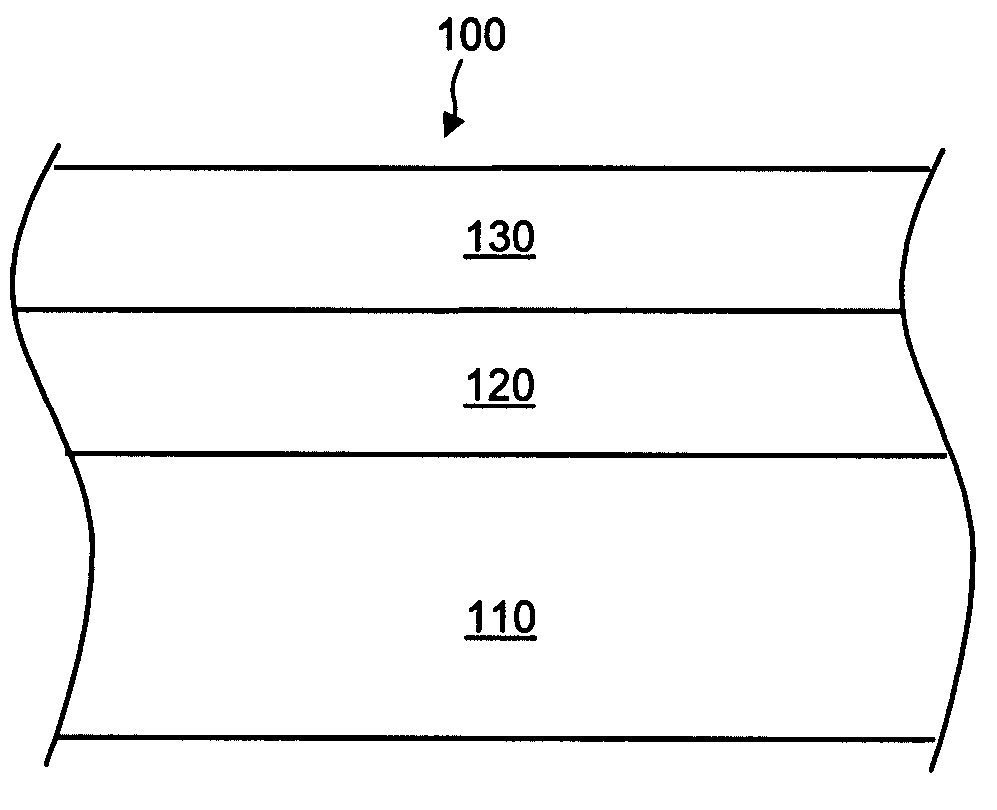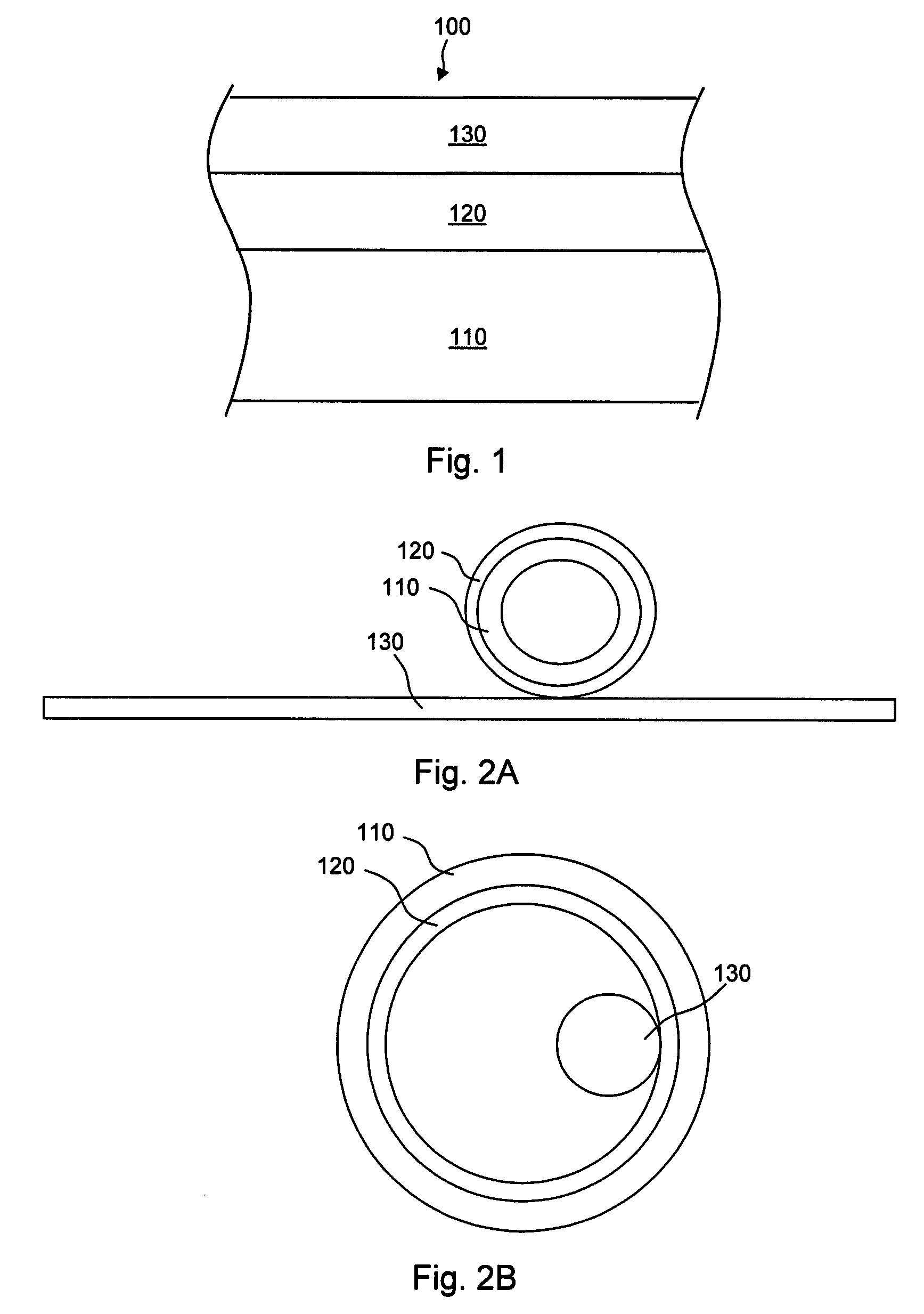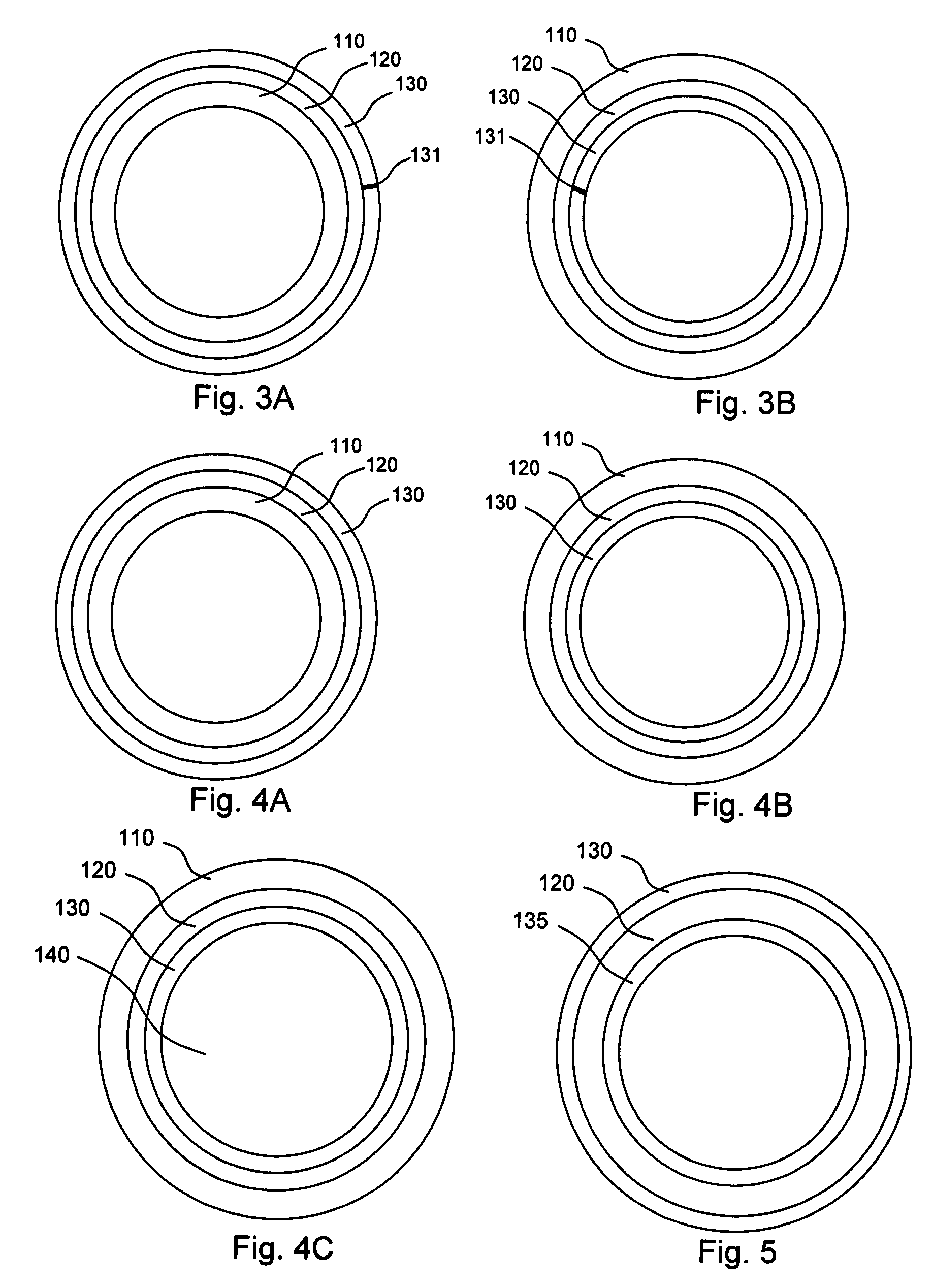Medical devices having sol-gel derived ceramic regions with molded submicron surface features
- Summary
- Abstract
- Description
- Claims
- Application Information
AI Technical Summary
Benefits of technology
Problems solved by technology
Method used
Image
Examples
Embodiment Construction
[0017]As noted above, in one aspect, the present invention provides implantable or insertable medical devices, which contain sol-gel derived ceramic regions that have molded submicron surface features.
[0018]As used herein, a “ceramic region” is a region (e.g., monolithic region, a coating layer, etc.) that contains one or more ceramic materials (e.g., one or more metal and / or semi-metal oxides such as those discussed below, among others), for example, containing one or more ceramic materials in an amount ranging from 50 wt % or less to 75 wt % to 90 wt % to 95 wt % to 97.5 wt % to 99 wt % or more.
[0019]As used herein, a “sol-gel derived ceramic region” is a ceramic region that is formed using sol-gel chemistry.
[0020]As used herein a “submicron surface feature” is a physical feature, for example, a pore, trench, or other depression, or a knob, ridge, or other projection, which has a width that does not exceed one micron (1 μm). In some embodiments, the submicron surface features of t...
PUM
| Property | Measurement | Unit |
|---|---|---|
| Surface | aaaaa | aaaaa |
| Metallic bond | aaaaa | aaaaa |
| Therapeutic | aaaaa | aaaaa |
Abstract
Description
Claims
Application Information
 Login to View More
Login to View More - R&D
- Intellectual Property
- Life Sciences
- Materials
- Tech Scout
- Unparalleled Data Quality
- Higher Quality Content
- 60% Fewer Hallucinations
Browse by: Latest US Patents, China's latest patents, Technical Efficacy Thesaurus, Application Domain, Technology Topic, Popular Technical Reports.
© 2025 PatSnap. All rights reserved.Legal|Privacy policy|Modern Slavery Act Transparency Statement|Sitemap|About US| Contact US: help@patsnap.com



